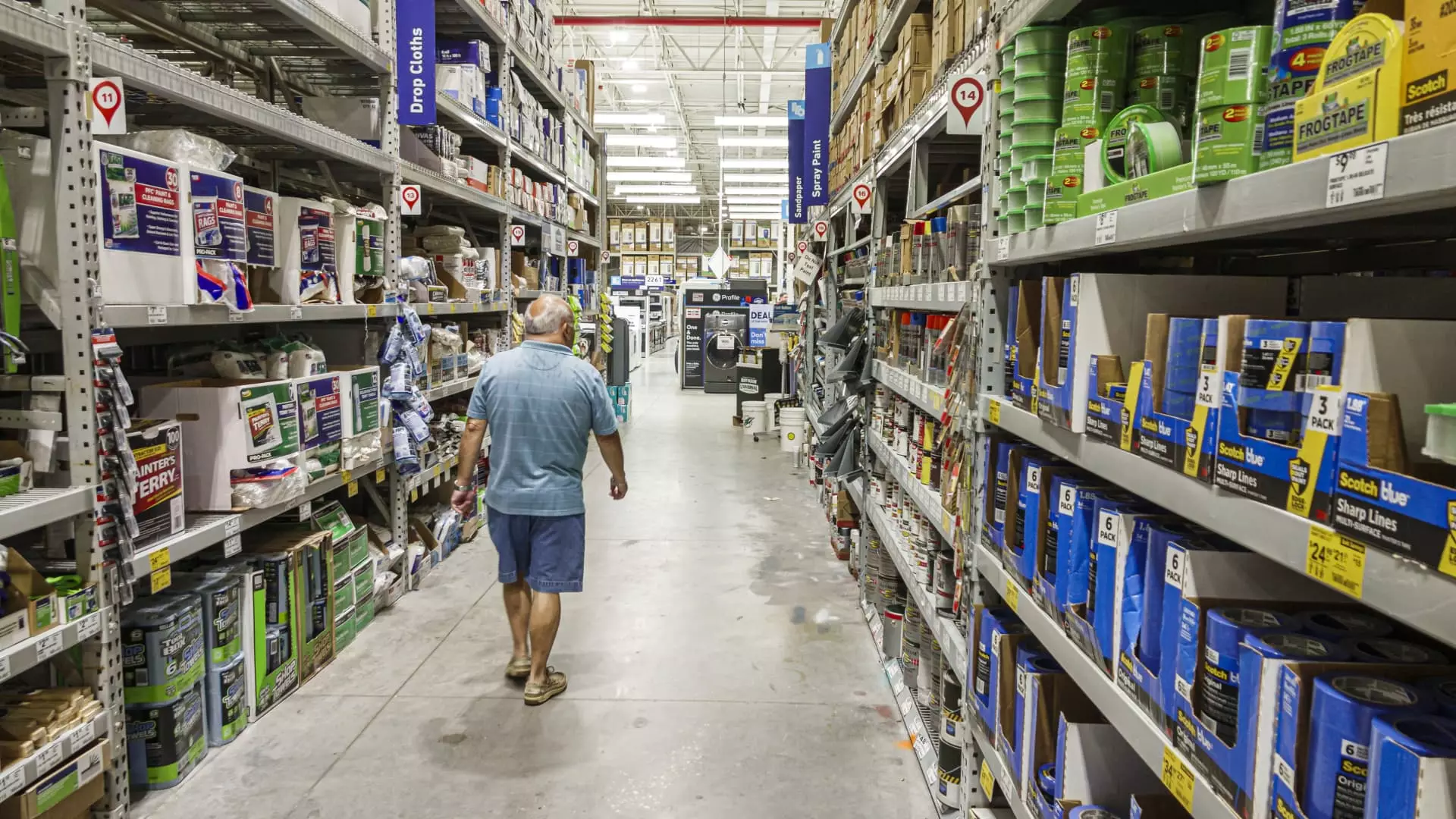The economic landscape of the United States has seen notable fluctuations in inflation rates, creating an intricate tapestry of price changes across various sectors. Recently, there has been a significant easing of inflation, and in certain categories of consumer spending—like furniture and gasoline—declines in prices have been observed. This phenomenon, known as deflation, is relatively uncommon, particularly in a broader economic context. In this analysis, we’ll explore the underlying factors contributing to these shifts, the unique circumstances surrounding different product categories, and the overall implications for consumers.
Deflation is defined as a decrease in the general price level of goods and services. While it is an unusual occurrence in major economies, several areas in the United States have exhibited this behavior in response to changing supply and demand dynamics following the chaotic disruptions of the pandemic. Economists like Mark Zandi of Moody’s express caution about interpreting these deflationary trends broadly. He emphasizes that while certain goods have experienced price reductions, a widespread decline across all categories is atypical. Businesses typically maintain stable prices and reflect minimal reductions, even in times of economic downturn. This scenario leads to speculation about the sustainability of deflation and its potential effects on overall economic health.
The COVID-19 pandemic dramatically changed consumer spending patterns. During lockdowns, people were essentially confined to their homes, which limited their ability to spend on entertainment or travel. Consequently, many households found themselves with extra disposable income as they curtailed discretionary spending. This uniquely positioned consumers to focus their spending on physical goods, propelling demand to extraordinary levels. The pandemic also disrupted global supply chains, resulting in shortages that inflated prices. Now that these conditions have stabilized, it’s noteworthy to see how this shift has caused prices for various household items to decline.
The Consumer Price Index (CPI) reveals fascinating trends in specific categories. Over the past year, household furnishings have seen a decrease of approximately 2%, while appliances, sporting goods, and tools have experienced similar declines. These reductions indicate a correction as the market adjusts to previous spikes in demand.
The automotive sector has been particularly illustrative of recent deflationary trends. Both new and used car markets have reported price declines, with significant drops of 1% and 5%, respectively, since September 2023. Sarah House, a senior economist at Wells Fargo, notes that the automotive industry endured some of the most significant price surges during the inflationary period. The Federal Reserve’s aggressive approach to rising interest rates has also played a pivotal role in this downturn. Higher financing costs led to decreased demand, which naturally contributed to softer vehicle pricing.
As the Fed began cutting interest rates in September, the car market may see continued adjustments in pricing, possibly encouraging a slow resurgence in consumer demand.
Another critical factor contributing to price stabilization and deflation is the strength of the U.S. dollar relative to other currencies globally. A robust dollar makes imported goods cheaper for American businesses, fostering a competitive pricing environment. This dynamic is essential not only for imported consumer goods but also for essential categories like food and energy.
Remarkably, the CPI indicates a notable decline in gasoline prices—approximately 16% since September 2023. Food prices are similarly influenced by varying supply chains and consumer demand, leading to price reductions in specific categories, such as apples and frozen vegetables.
While deflation might bring short-term relief to consumers in the form of lower prices, its implications could be more complex. Persistent deflation can lead to reduced consumer spending, as consumers may delay purchases in anticipation of even lower prices. This dynamic could stifle economic growth, forcing businesses to respond by cutting costs or laying off workers, which would further dampen consumer confidence.
Thus, although certain sectors have enjoyed price reductions, broader economic indicators must be closely monitored. The interplay between deflation, consumer behavior, and monetary policy will dictate future developments in the economy.
The deflationary trends witnessed in various sectors of the U.S. economy present both opportunities and challenges. Factors such as post-pandemic consumer behavior, the strength of the dollar, and the influence of the Federal Reserve all play significant roles in shaping these trends. As consumers benefit from lower prices in several categories, the potential for long-term consequences looms large, necessitating careful analysis and proactive economic policies. For now, the return to a more normalized pricing environment offers a moment of respite for consumers but urges stakeholders to remain vigilant in addressing the nuanced challenges ahead.

